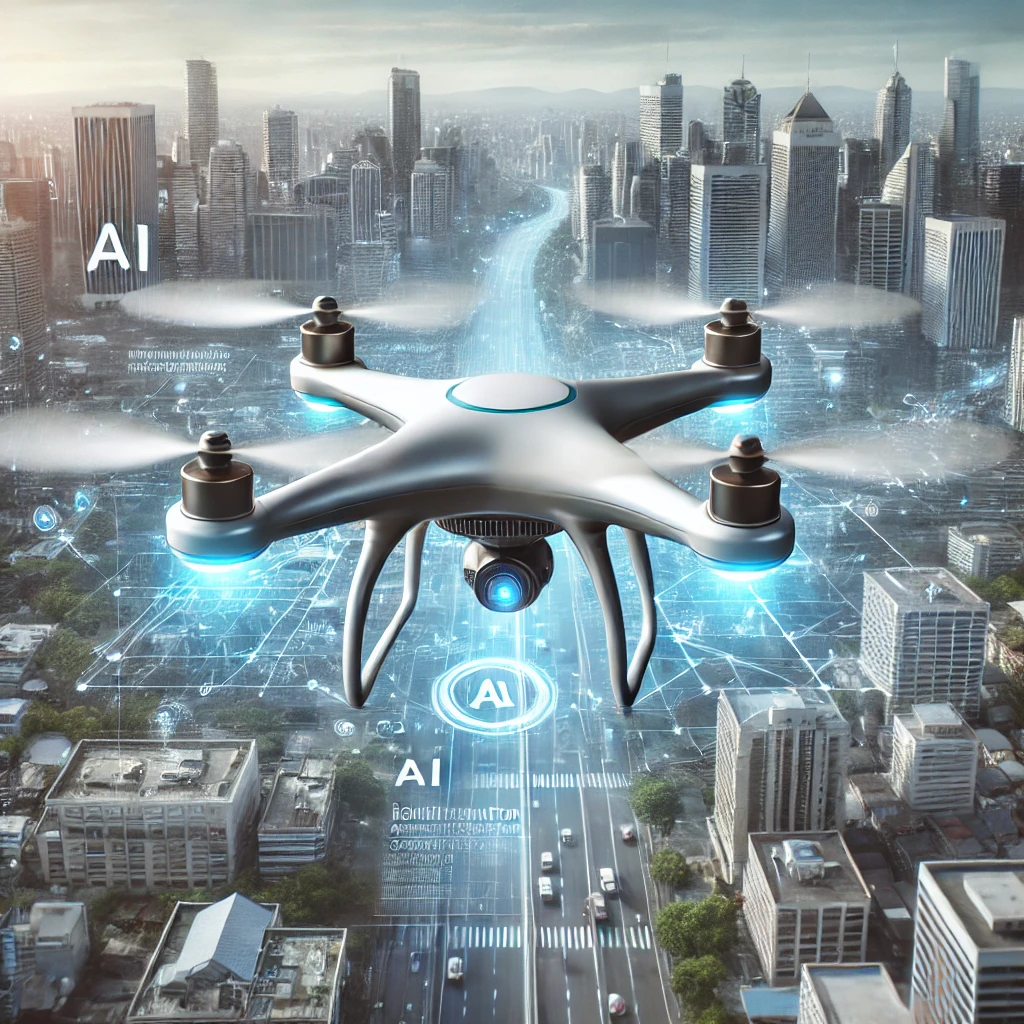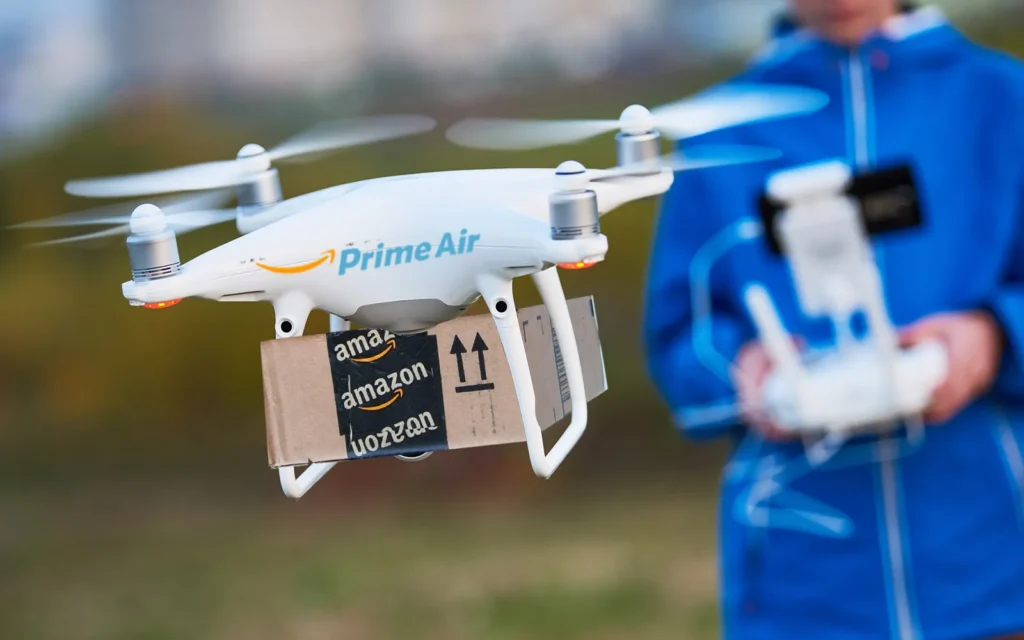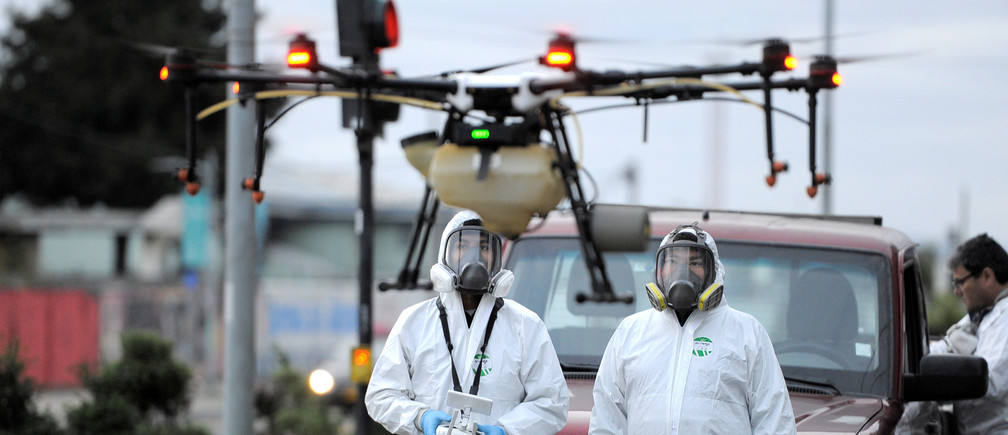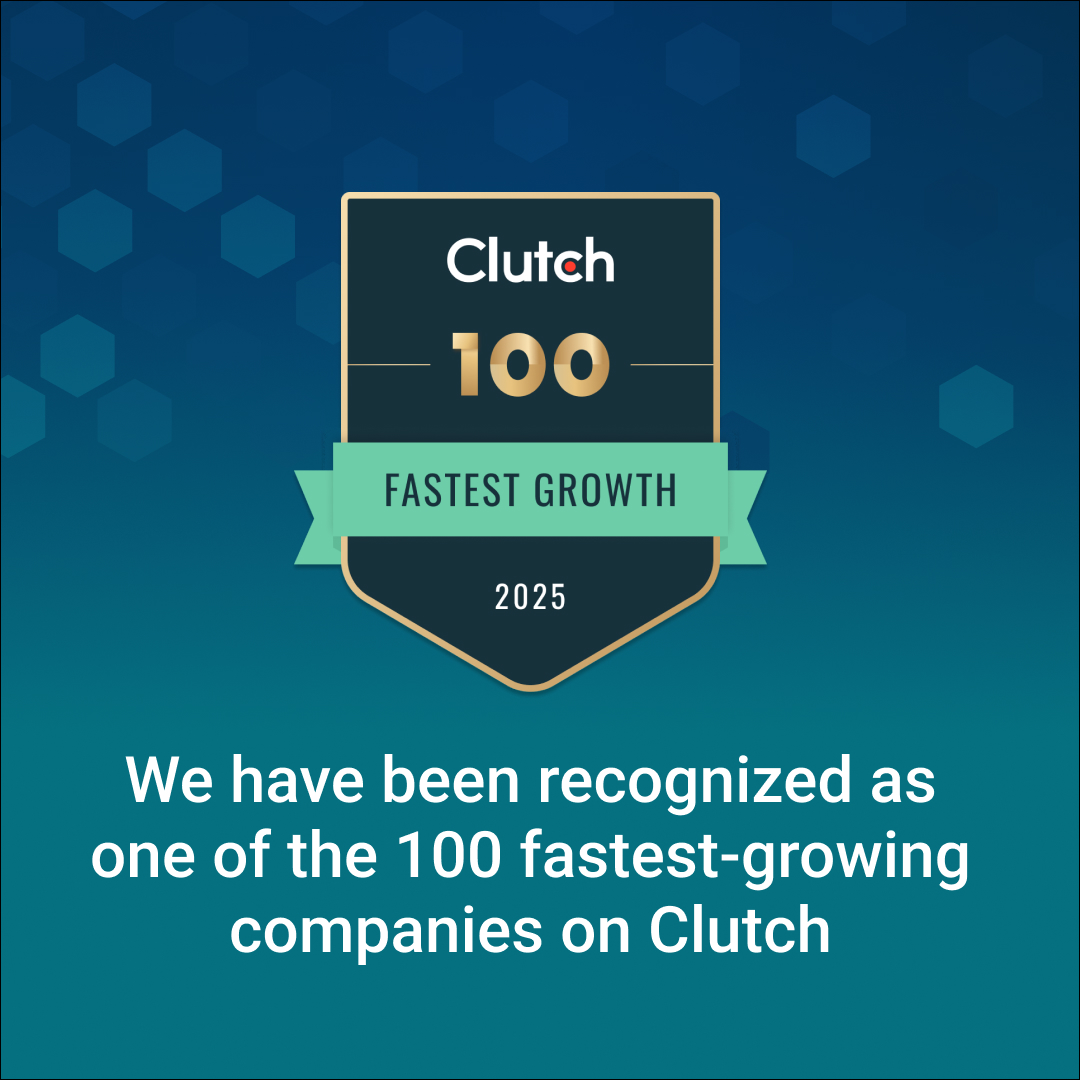Just a few years ago, the concept of drones delivering packages directly to our homes felt like something out of a science fiction novel or a distant futuristic vision. However, this once far-fetched idea is rapidly becoming part of our daily lives.
With remarkable advancements in Artificial Intelligence (AI) and autonomous drone technology, these flying machines are now more than just prototypes or experimental tools—they’re being actively deployed to deliver everything from everyday online purchases to critical medical supplies. The pace at which these innovations are evolving is remarkable, and they are poised to revolutionize the way we think about delivery and transportation.
Drones, powered by cutting-edge AI, are making these processes faster, more efficient, and accessible in ways that were unimaginable just a few years ago. As these technologies continue to develop, the potential impact on industries, businesses, and consumers alike is only just beginning to be realized, promising a future where autonomous deliveries become an integral part of modern life.

Figure 1: The Rise of AI and Autonomous Drones
The Rise of AI and Autonomous Drones
Over the past decade, AI and machine learning have made leaps and bounds, sparking innovations across many industries. Drones, which started primarily for military use, have evolved into versatile tools capable of complex tasks.
Now, with AI algorithms onboard, these drones can make decisions on their own, navigate in real-time, and detect objects—all without human intervention. This makes them a promising solution for logistics and delivery challenges, offering new ways to streamline operations, cut costs, and boost customer satisfaction.
The global drone market is witnessing an unprecedented surge, driven by the growing interest and application of these technologies across various sectors. Industry forecasts project that the commercial drone market will reach a staggering $58.4 billion by 2026, reflecting the increasing demand for drones in areas such as delivery, transportation, and beyond.
This rapid expansion is largely fueled by the potential of drones to revolutionize last-mile delivery, alleviating logistical bottlenecks, reducing traffic congestion in urban environments, and providing better access to hard-to-reach or remote areas.
The future of drone technology promises not only to change the way goods and services are delivered but also to redefine the boundaries of accessibility and efficiency in the global marketplace.
The Brains Behind the Machines
AI is the driving force behind autonomous drones, allowing them to operate on their own.
Here’s how AI powers these flying machines:
📌 Computer Vision: Drones use AI algorithms to “see” their surroundings. By processing data from cameras and sensors, they can identify obstacles, recognize delivery locations, and navigate through complex environments.
📌 Machine Learning (ML): ML models help drones learn from data and improve over time. This adaptability is crucial for tasks like optimizing flight paths, predicting weather patterns, and avoiding obstacles.
📌 Sensor Fusion: AI combines data from various sensors—like GPS, LiDAR, and infrared—to give drones a comprehensive understanding of their environment. This ensures precise navigation, even in challenging conditions like crowded cities or bad weather.
📌 Natural Language Processing (NLP): While not central to drone operation, NLP aids in human-drone communication. For example, customer service bots might use NLP to send delivery updates to consumers.
The Role of Autonomous Drones in Transportation
With AI, drones have become fully autonomous, capable of handling a range of tasks with minimal human help. This is transforming traditional logistics models.
1. Parcel and Goods Delivery
Autonomous drones are changing how goods and parcels are delivered, offering a faster and more efficient alternative to traditional methods. Companies like Amazon, UPS, and Google are investing heavily in drone delivery systems, aiming to use drones for delivering small packages directly to customers’ doorsteps.
Advantages include:
🔹 Speed: Drones can fly over traffic jams and geographical obstacles, significantly reducing delivery times.
🔹 Cost Efficiency: By reducing the reliance on human drivers and vehicles, companies can lower operational costs. Over time, savings on fuel, vehicle maintenance, and labor can be substantial.
🔹 Eco-Friendly: Electric drones produce zero emissions during flight, contributing to a reduced carbon footprint.
🔹 Accessibility: Drones can reach remote or hard-to-access locations, delivering essential supplies to rural or disaster-stricken areas where traditional vehicles might struggle.
Real-World Examples:
🔹 Amazon Prime Air: Amazon envisions delivering packages of up to five pounds within 30 minutes using drones. In 2020, they received approval from the U.S. Federal Aviation Administration (FAA) to begin testing commercial drone deliveries.

Figure 2: Autonomous online drone delivery by Amazon Prime Air
🔹 Google’s Wing: Wing has conducted thousands of drone deliveries in Australia and the U.S., delivering items like coffee, food, and over-the-counter medicines to customers’ homes.
2. Transportation of Medical Supplies
In healthcare, time is often of the essence. AI-powered drones are making a significant impact by swiftly delivering medical supplies to remote or hard-to-reach areas.
Key Benefits:
🔹 Rapid Response: Drones can deliver emergency medical supplies, such as blood products, vaccines, and medications, faster than ground transportation. This speed can be critical in saving lives during emergencies.
🔹 Overcoming Geographical Barriers: Drones can fly over mountains, rivers, and damaged infrastructure, reaching areas inaccessible by vehicles. This is especially valuable in regions with poor road networks or after natural disasters.
🔹Cost Savings: By minimizing the need for extensive infrastructure, such as roads and bridges, drones reduce the costs associated with delivering medical supplies to remote areas.
🔹 Improved Healthcare Access: Communities previously cut off from essential medical services now have reliable access, enhancing overall public health outcomes.
Case Studies:
🔹 Zipline in Rwanda and Ghana: Since 2016, Zipline has completed over 200,000 deliveries of blood and medical supplies. Their drones, capable of round trips up to 160 kilometers, have transformed emergency medical logistics in these countries.
🔹 Matternet’s Operations: Partnering with UPS and hospitals in Switzerland and the U.S., Matternet’s drones deliver lab samples and medical supplies, improving efficiency and patient care.

Figure 3: Using drones to transport during COVID-19 pandemics
During the COVID-19 pandemic, drones played a crucial role by transporting test kits, vaccines, and personal protective equipment (PPE) to areas difficult to access due to lockdowns or overwhelmed infrastructure. By reducing the need for human couriers, drones also minimized the risk of virus transmission.
3. Traffic Management and Urban Air Mobility (UAM)
Urban Air Mobility represents the next frontier in transportation, aiming to alleviate ground traffic congestion by introducing autonomous air vehicles into urban environments. UAM involves using electric vertical take-off and landing (eVTOL) aircraft to transport passengers and goods across cities.
Key features of UAM:
🔹 Advanced Navigation: AI algorithms enable autonomous or semi-autonomous flight, ensuring safety and reliability.
🔹 Environmental Benefits: Electric propulsion reduces emissions and noise compared to traditional aircraft and cars.
🔹 Infrastructure Development: Plans include creating “vertiports” for take-offs and landings, utilizing rooftops or unused urban spaces.
Challenges to address:
🔹 Regulations: Developing air traffic rules for low-altitude urban airspace is essential.
🔹 Safety Concerns: Ensuring passenger safety through rigorous testing and certification processes.
🔹 Public Acceptance: Building trust with the public by demonstrating reliability and addressing concerns about noise and privacy.
Test flights have already occurred in cities around the world, and companies are collaborating with governments to make urban air travel a feasible option in the near future. If successful, UAM could redefine urban transportation, offering a fast and sustainable alternative to ground travel.
The Future of AI and Autonomous Drones in Transportation
The future is bright for AI-powered autonomous drones. As technology advances and regulations evolve, drones are likely to become integral to global logistics and transportation. The potential for faster deliveries, reduced costs, and improved accessibility is driving innovation.
In the coming years, we expect autonomous drones to play a bigger role in last-mile delivery, medical logistics, and even passenger transport through Urban Air Mobility systems. Overcoming technical, regulatory, and societal challenges is essential to realizing this vision.
Ultimately, the rise of AI and autonomous drones marks the beginning of a new era in delivery and transportation—one that’s faster, smarter, and more sustainable. The challenge lies in ensuring this technological revolution benefits everyone while addressing the concerns and obstacles along the way.
Partnering with SmartDev for Drone Integration
Businesses across industries are recognizing the transformative potential of AI-powered autonomous drones for streamlining operations and enhancing customer experiences. Whether you’re in retail, healthcare, logistics, or any other sector that requires the movement of goods, integrating drone technology can provide significant competitive advantages.
With expertise in AI development, drone software, and regulatory compliance, SmartDev offers tailored solutions designed to meet the unique needs of your industry:
📌 Custom AI Solutions: SmartDev can develop AI algorithms specifically designed for your business applications, such as optimizing flight paths, integrating drones with existing logistics software, and improving sensor-based decision-making systems for drone navigation.
📌 Compliance and Safety Assurance: SmartDev helps navigate regulatory hurdles and ensures compliance with drone flight regulations in your region. They also implement robust safety protocols to minimize risks and ensure secure drone operations.
📌 Collaborative Partnerships: SmartDev partners with businesses to create a roadmap for integrating drones into your long-term strategy. By working closely with your team, we customize drone technology to fit your specific delivery, transportation, or logistics needs while helping you achieve your broader business goals.
SmartDev has successfully implemented AI-powered autonomous drones for several businesses, as highlighted in our case studies, where we enhanced logistics efficiency and reduced delivery times for a global e-commerce company.
If you’re ready to explore how AI and autonomous drones can transform your business, contact us today to discuss a tailored solution that meets your specific needs.







